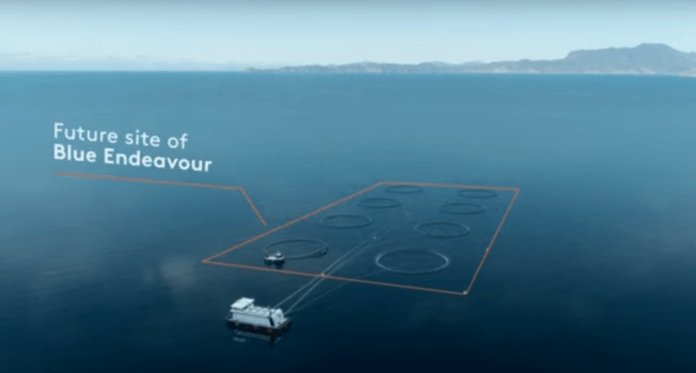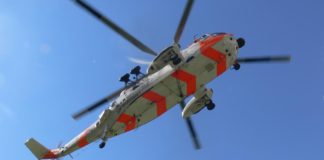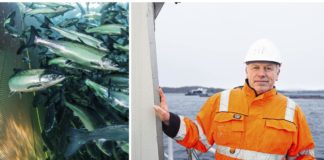New Zealand King Salmon has received the green light to begin farming the first open ocean finfish site in New Zealand, putting the company on track to more than double its current 8,000 MT production capacity per year.
The publicly listed salmon producer’s Blue Endeavor project is designed to produce 10,000 MT of fish in 10 168-meter pens on two blocks of pens, with each pen housing 100,000 fish.
The farm will be built in two phases: Phase one, on the south side, will grow approximately 5,000 MT of king salmon per year. Phase two will be the northern block of pens, which will produce the same volume. The two blocks will occupy a surface area of 12 hectares in total.
Waves as high as 4 meters are expected to descend on the farm, which the company said makes solid engineering imperative. Each of the pens will be secured by mooring grids so it could withstand the waves.

“We’re pleased our plans to farm in the open ocean have been given the go ahead. This is a first for New Zealand and is a significant decision for the aquaculture industry,” says Graeme Tregidga, who was named Acting CEO following the abrupt departure of CEO Grant Rosewarne early this month.
Tregidga says the open ocean is part of the company’s long-term strategy, but the current focus remains on the company’s inshore farming production.
He said the application process has taken six years up to this point. The next step, he said, is to study the decision and associated conditions before coming up with an implementation plan and investment options.
NZKS General Manager of Aquaculture, Grant Lovell, said open ocean farming makes logical sense for both the environment and for the species in the long term.
Fish farming in the open ocean is deemed biologically beneficial to salmon as it exposes them to cold water year-round. Near shore waters, where all of salmon farming in New Zealand is currently sited, are warming because of climate change.
“While there might be opportunities to increase the productivity of existing salmon farms, the substantial increase in industry output to produce 70,000 to 80,000 tonnes of salmon per annum will require farming in the open ocean. Inshore water space with the right attributes and conditions for optimal salmon growth is limited,” said Consultancy Two Two Eight Ltd in a report prepared for Fisheries New Zealand.
The approval of the open-ocean project by New Zealand authorities sends a clear signal to the industry that the government wants to see growth in the sector. Just last October, the government approved the country’s first land-based salmon farm project.









